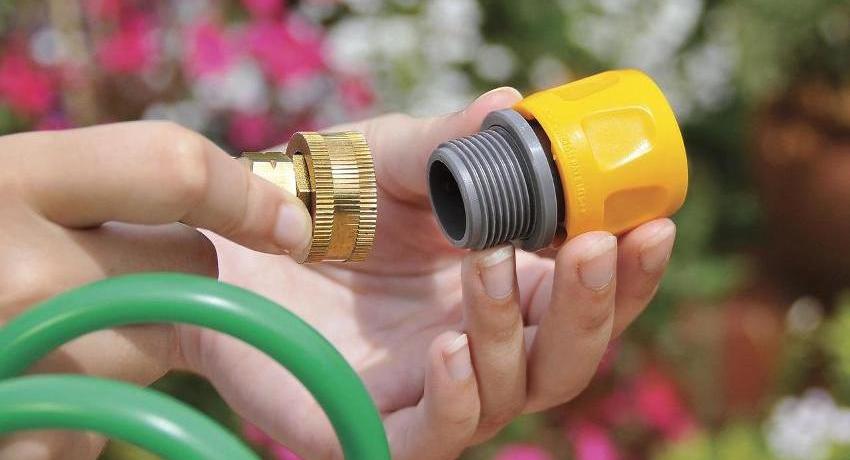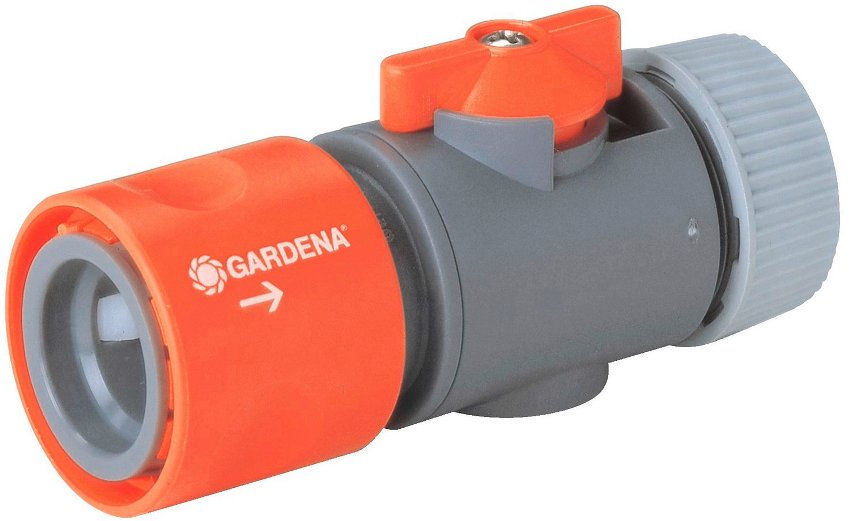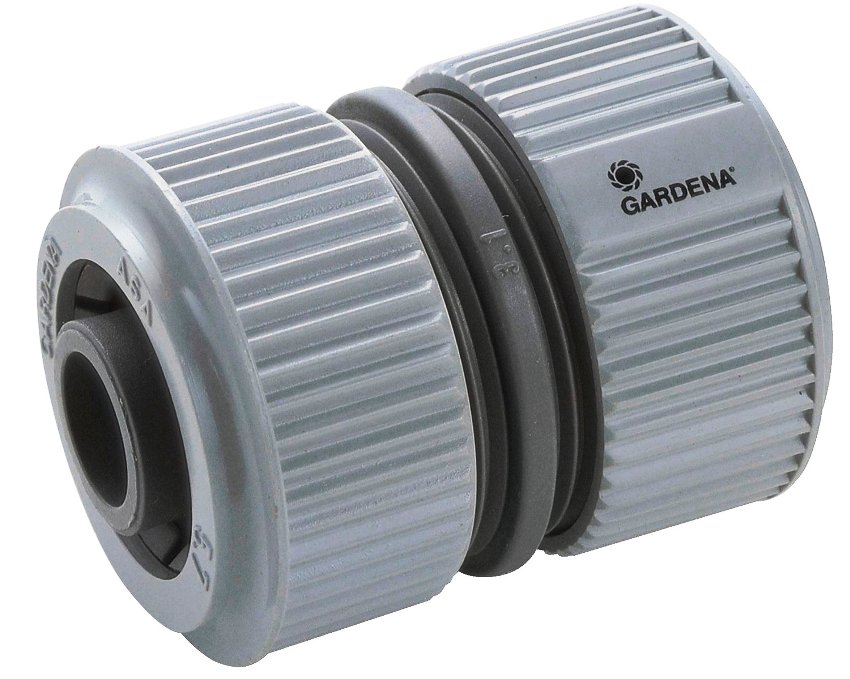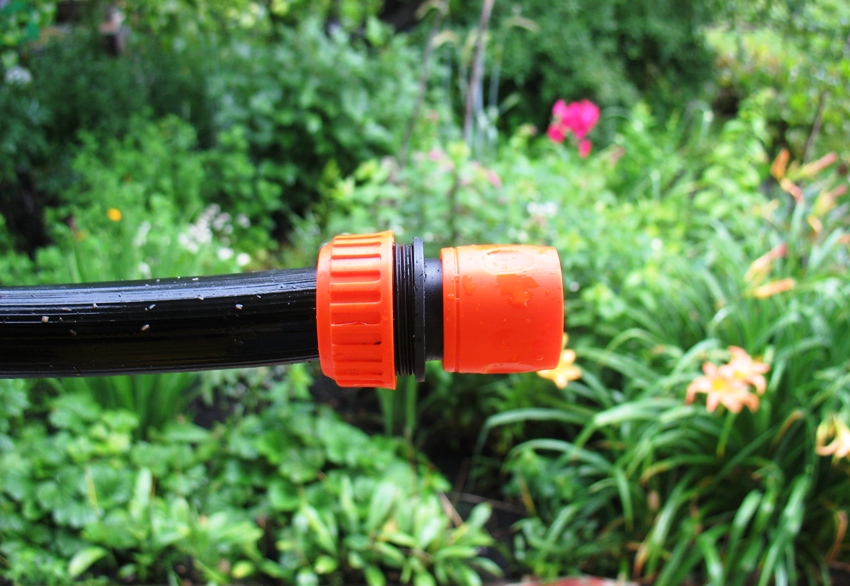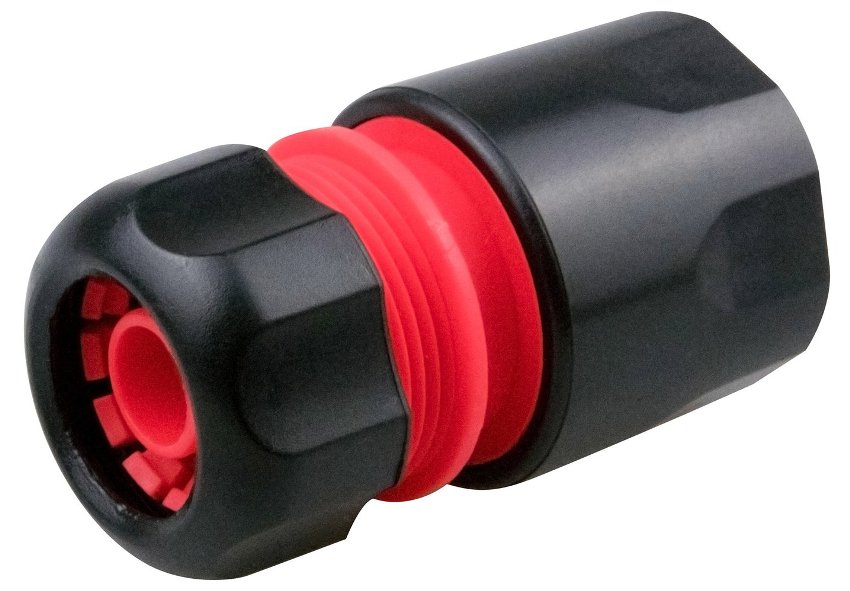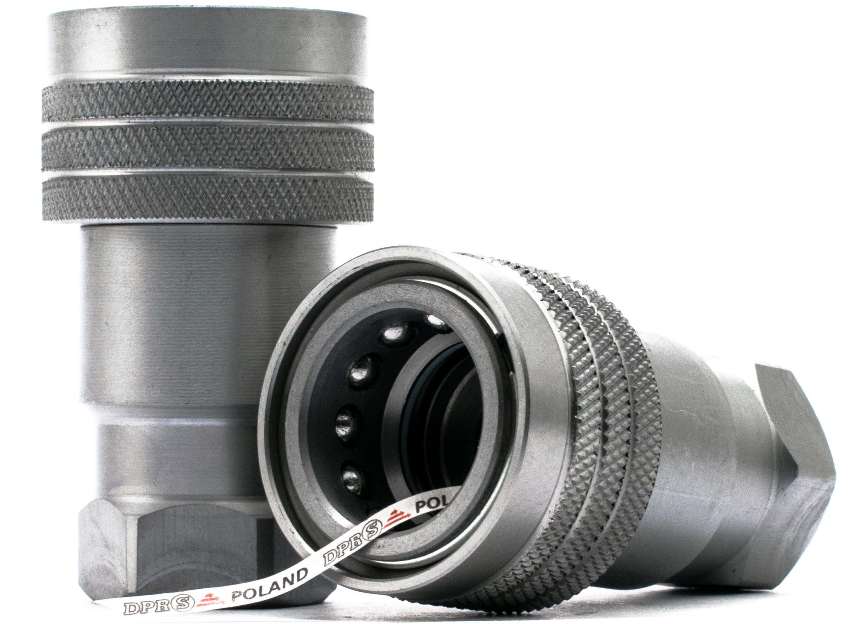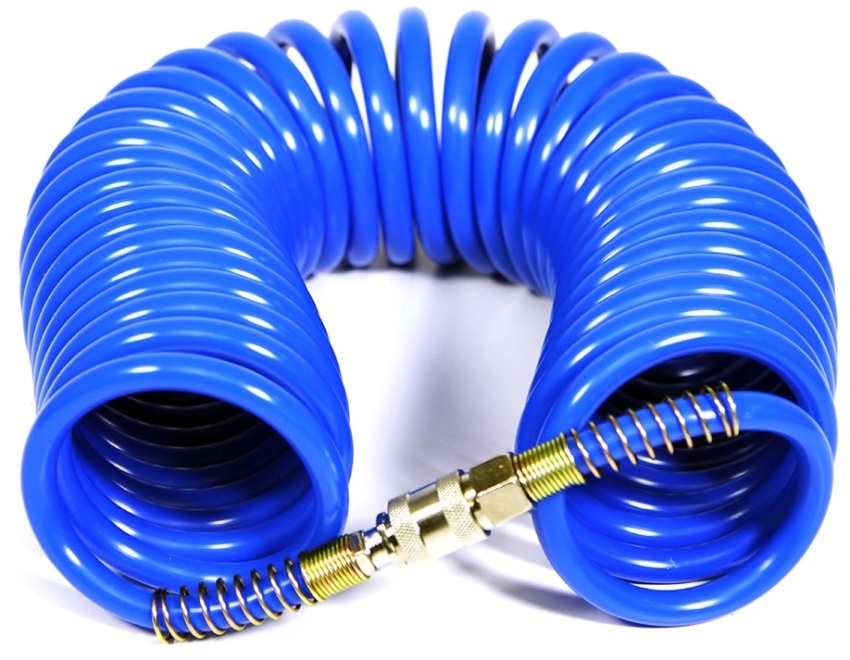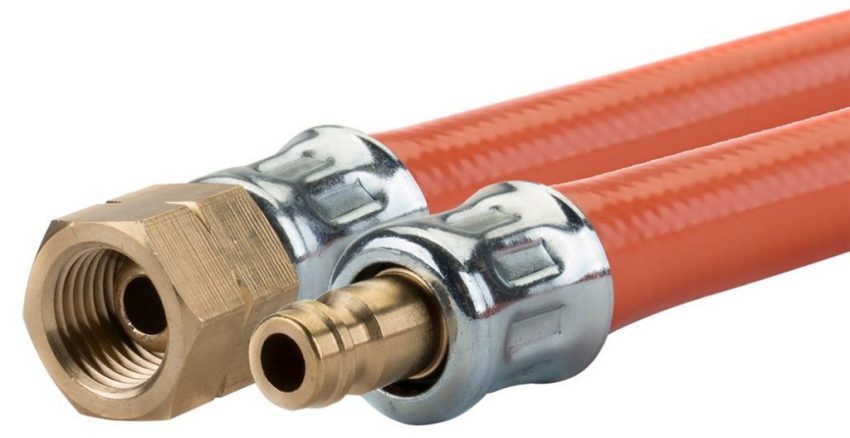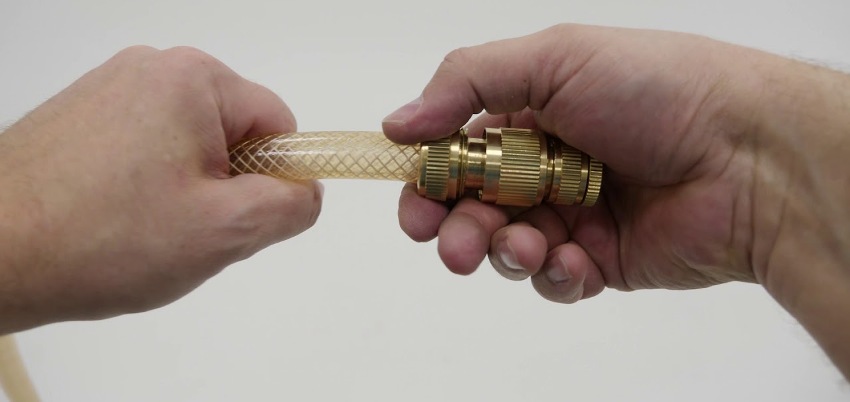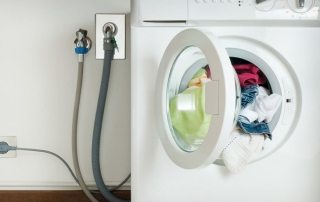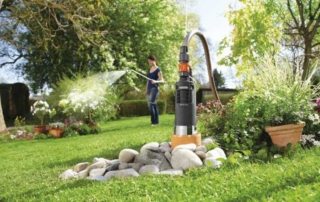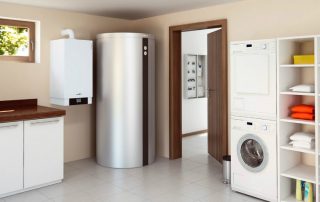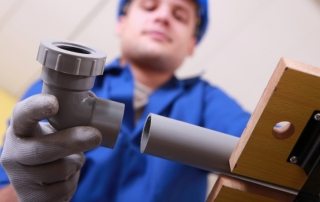An irrigation system consists of a specific set of elements through which water is supplied from the source to the end point. The main ones are hoses and couplings. The sleeve is selected based on the material of manufacture. From the best side, a quick-detachable hose for a hose, which is able to perform a reliable and sealed connection of system elements without using a tool, has proven itself as a connecting element.
Content [Hide]
- 1 Which quick connector for the hose is better to choose
- 2 The main criteria for choosing an irrigation hose
- 3 Characteristics of quick-release couplings for water and air
- 4 Material for manufacture and design of the fitting
- 5 Types of quick-release elements depending on the working pressure of the system
- 6 Areas of use of quick-disconnect fittings
- 7 How to choose the right quick-disconnect hose fitting
Which quick connector for the hose is better to choose
Before choosing a garden hose so as not to bend, you should consider the existing product options. Based on the material of manufacture, there are rubber, silicone sleeves, as well as products made of PVC and thermoplastic elastomer.
The most popular is the rubber hose. It is able to withstand working pressures over 8 atm. The material retains its properties at temperatures from -30 to 70 ° C, so it can be stored in unheated rooms and used under the influence of ultraviolet rays.
The material withstands the negative effects of the chemical environment, therefore it can be used for transporting aggressive liquids. The rubber hose does not deform and has a long service life. The disadvantages of the material include significant weight (due to the multilayer and reinforced equipment of the product).
No less popular are PVC watering hoses. They have a two- or three-layer texture with built-in synthetic fiber reinforcement. Such products are characterized by resistance to temperature extremes, exposure to ultraviolet rays, are not prone to deformation, withstand working pressure up to 20 bar. Their cost is slightly higher than the price of rubber analogs. Due to their low weight, they are more convenient to use.
Silicone hoses in the form of single or multi-layer hoses are designed for operating pressures up to 2 bar, therefore they are used for gravity irrigation systems. Products with synthetic reinforcement can withstand pressures up to 10 bar.This hose is lightweight, which makes it easy to use. He is not prone to the formation of fractures and bends. However, under the influence of the sun, the walls of the product expand, which leads to the formation of microcracks and their quick destruction.
The thermoplastic hose is a versatile product with high technical and operational characteristics. It can withstand temperatures from -50 to +90 ° C. It is characterized by increased elasticity, flexibility, resistance to twisting and exposure to ultraviolet rays, low weight, but high cost, which is justified by a long period of operation.
The main criteria for choosing an irrigation hose
After choosing the material for making the hose, it is worth deciding on its diameter and length. Depending on these criteria, the sleeve can be purchased cut or in a bay. The most common are products whose length reaches 15, 20, 25, 35 and 50 m. This parameter is selected based on the size of the section and the method of laying the hose. If you intend to water different beds, add all the lengths. To connect elements of different sizes, you will need to purchase quick couplings for hoses. They can be made in the form of a tee, a herringbone or a cross.
Important! A large number of garden hose quick couplings will reduce the speed and power of the water flow.
Based on the diameter, the most commonly purchased hoses are ½, ¾, 1, or 1 ½ inches. The value is selected based on the rule that the diameter of the inner hole should be directly proportional to the length of the sleeve. Compliance with this condition is able to ensure a sufficient constant water pressure.
The next criterion is the selection of a product in accordance with the operating pressure in the system. This is determined by the wall thickness of the hose. Single-layer products withstand up to 2 Bar, multilayer with reinforcement - 6-10 Bar. The hose must be able to withstand a wide range of temperatures to prevent wall expansion and cracking.
For convenient operation of the hose, it is worth purchasing a functional device in the form of a coil on which the product is wound. Before using the hose reel, it is important to know a few rules. Before winding up, disconnect the hose from the water supply and allow the water to drain. Methodically rotating the reel, the hose must be cleaned of dirt with a rag.
What is a quick coupler for hose and pipes
Quick connectors are a specific type of fittings that are used to connect two segments of pipe or hose in a short amount of time without the use of tools. Such elements greatly simplify the process of installing a fluid supply and distribution system. Compressor hose couplings are also used.
Quick-release couplings are compact in size, light in weight, which simplifies the installation process of the system. The fittings are made of a material that is highly resistant to corrosion.
Thanks to the special shape of the product, which combines the stepped design of the component elements and the presence of O-rings, a tight, reliable connection of two segments of pipes or hoses is carried out. In addition, the geometry of the fittings provides quick and convenient connection and disconnection of the docking, which expands the scope of their use. High pressure hose couplings are capable of handling special conditions where conventional couplings cannot.
Quick release couplings can be reused over a long period.When properly assembled, the systems can function at positive and negative temperatures. This type of connection is characterized by low cost.
Despite the positive qualities of fittings, quick-release couplings also have weaknesses. With each connection and disconnection, the products gradually lose their original best properties. Domestic and imported items are different from each other. The first type should be selected by the inner diameter, and the second by the outer.
Characteristics of quick-release couplings for water and air
Quick disconnect couplings are purchased as a set, which includes a special coupling, nipple, T-, L-, Y- and X-shaped adapters, threaded adapters and clamp fittings. The sleeve, referred to as the “mother” of the product, consists of a body, clamping retainer, rotary valve, butt and sealing rings, and a connecting adapter. The nipple, which is called the "daddy" of the part, consists of a body, a connecting element, a half-turn valve, a sealing ring.
The connection of the two hose elements by means of a quick release is done without the use of tools. Before connecting two hoses for irrigation of the same diameter, press the locking sleeve on the coupling towards the adapter. The sleeve is inserted into the nipple, which is carried out by the release of the clamping balls. Next, the coupling is released, this will create a reliable fixation in the sleeve nipple. After connection, the check valves will open, which will facilitate free movement along the hoses of the working medium.
Useful advice! To remove the quick coupler, the above manipulations are performed in the reverse order.
Some models of modern quick couplings are equipped with automation. Before connecting the two irrigation hoses, you must press them together through the fitting.
Material for manufacture and design of the fitting
Quick-release couplings are made of stainless steel or alloy steel, aluminum, bronze, titanium, other metal alloys and polymer materials in the form of polypropylene, PVDF or polyimide. The O-rings are rubber-based elastomers, fluoroelastomers, or polypropylene-ethylene materials.
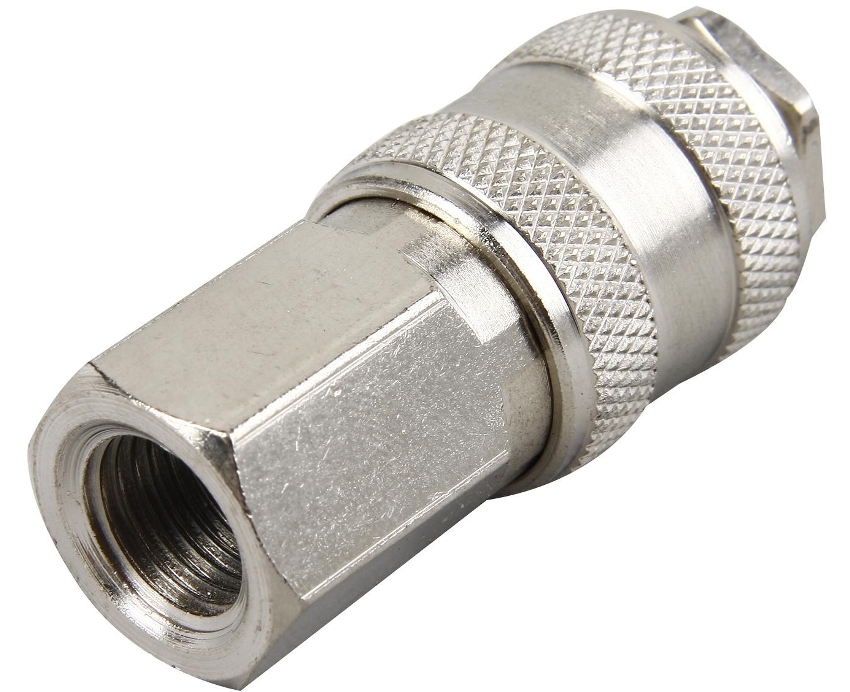
Quick-release couplings are made of stainless steel, aluminum, bronze, titanium and other metal alloys
To ensure a long period of operation, metal fittings are additionally subjected to anti-corrosion treatment with a protective layer by means of nickel plating, chromium plating, galvanizing or other hard coating.
Plastic options are mainly used for domestic needs when organizing an irrigation system. It is advisable to use metal products as quick couplings for fuel hoses.
Cam type quick couplings are available with a wedge retainer or valve. They can be used for joining plastic or metal pipes, flexible conduits. Some fittings are equipped with a special collet clamp.
Fittings are produced in a wide range, they differ in diameter, length and weight. In terms of cross-section, quick couplings are available for ½ ”hoses and products up to 150 mm. This value should correspond to the diameter of the hose. Hose quick release ¾ applies to 19 mm hose. A 1 "connector fits 25mm hose and ½" fits 12mm. Non-standard fittings with a diameter of up to 540 mm are produced by individual order.
Varieties of quick-release couplings for hoses and pipes
Depending on the location and number of valves, there are three types of quick-release fittings.The first type has a free passage without a valve. The second option is equipped with a valve on one side. The third type is equipped with two valves on both sides.
Quick disconnect couplings can have different connector types. Cam-type products are called camlocks. They are able to quickly and easily dock flexible hoses, connect the sleeve to the container. The cam fitting is characterized by increased resistance to vibrations without the use of additional fasteners. This is the ideal compressor quick coupler.
Drylok quick couplings are used for connecting flexible connections of the system for pumping dry media. Such a fitting has a lever valve, which opens and closes the line with one push. These quick couplers reduce the likelihood of overpressure in the pipes, which can cause unexpected ruptures.
Important! These quick-release couplings are used in systems that transport hazardous substances in the form of oil, solvents or acids.
KAMVALOK industrial quick-release couplings are used to connect the pipelines for the transportation of glue, varnish, paint and other acids.
Related article:
Diy water well: effective drilling methods
The main types of wells and methods for their drilling. Drilling tools and equipment. Advice for rational use.
Quick-disconnect hose couplings are available in straight or angled configurations, and there are three- and four-way fittings.
Types of quick-release elements depending on the working pressure of the system
Based on the working pressure, there are four types of hose couplings. ISO-A fittings are used to connect hoses in a low working pressure system. Due to the presence of valves in the form of a cone, the circulation of the medium inside the line is not obstructed.
FIRG water or air hose couplings have a wide range of applications. When closed, the structure has no protruding parts. The valves have a disc design, as a result of which unnecessary resistance is not created in the system. It also eliminates the possibility of air entering the line or fluid leakage.
For a system with a working pressure of 110-300 bar, TGW quick couplings are used. They are equipped with special protective caps made of plastic and metal to prevent leakage of the working medium. These quick couplings for 1 ”hose and larger diameter products can withstand impulse loads and water hammer. For domestic mobile hydraulic tools, it is advisable to use quick-release devices of the HPA type, designed for an operating pressure of up to 700 bar.
Important! When choosing a quick coupler with a lower power reserve, there is a high probability of a quick failure of the connection, and the use of a quick coupler with a higher power is an economically unjustified solution.
Other quick connect hose options
Quick-release couplings for air hoses are tubular connectors with a one-way valve and threads (external or internal). Such fittings also differ in the presence of a "herringbone", which is located on one side, and on the other there is a coupling.
The herringbone fitting can be welded, double or non-hex. A hose is attached to it. The fitting is available in steel, brass, copper or rubber.
A new generation element is the quick-release air connection with a two-piece pneumatic connector with a special fuse.The fitting is made of metal, and the body is made of composite material, which ensures the comfort of using the fitting and a long period of operation. It is capable of bleeding oxygen while the pneumatic tool is stopped. The lock is turned on with a regular key. Pressing once will release oxygen, and pressing again will detach the instrument.
The quick-release couplings for the gas hose are equipped with a self-locking element in the form of a socket with a check valve and a disconnecting part - a plug. The fitting is connected to the supply hose through a socket, and with a plug - to another element. When disconnected, the line is locked, which does not require pressure relief in the system until the next connection.
Areas of use of quick-disconnect fittings
Quick-release couplings are widely used for domestic needs, namely in watering works. The presence of such elements simplifies assembly, while there is no need to turn off the water. Hydraulic hose quick couplings allow you to connect hoses to pumps, sprinklers and other irrigation accessories. They are also used for branching networks. For household needs, quite simple plastic products, which are characterized by wide functionality. They usually consist of several elements. Some fittings are equipped with a locking mechanism or an auto-stop option.
Watering hose quick couplings work well with a variety of watering attachments. They also protect the hose from kinking. Products made of shock-resistant plastic with galvanized coating are widely used. They are more comfortable to work with as they are less slippery.
Fittings are widely used in manufacturing workshops for the installation of hydraulic systems. They can be used to lengthen the flexible hose and move the equipment to another location. There are also quick couplings for pneumatic tools. These fittings are made of impact-resistant steel with a protective corrosion layer. They are presented in one piece. When they are docked, the hose is inserted into the device. Inside it is gripped by a carved springy bushing, which creates an airtight liner. To remove the hose, press on the retaining ring.

Various materials of manufacture allow the use of quick-release couplings both in everyday life and in industry
Important! When choosing quick-release couplings for a specific area, it must be ensured that the diameters, sizes and values of the working pressure for all elements of the system are consistent.
Quick-release couplings have found their application in the installation of special-purpose highways in the metallurgical, chemical and mining industries. They are often used in the construction of water, rail or road transport and the assembly of medical equipment.
How to choose the right quick-disconnect hose fitting
Quick release couplings are presented in a wide variety today. Most of the models are interchangeable. When choosing a quick-release connection, consider the operating pressure in the system, the diameter of the hose and the size of the nipple, the temperature conditions of the environment during the period of use of the product and the possibility of mechanical stress.
Useful advice! When choosing a quick-release connection, you should have the hose for which you purchased it.
If the connectors are going to be used for irrigation purposes, then it is enough to buy inexpensive plastic quick-release hose couplings or products with galvanized dusting. In this case, the quick release couplings can be threaded or push-off. To install the first option, you will need some skills. To simplify the process of arranging the system, it is better to purchase automatic clamps.
If the water flow is to be divided into several hoses, a quick-release for water with the "auto-stop" function should be preferred, in which the flows to unnecessary hoses are cut off by means of a closing valve.
The guarantee of long-term operation is not necessarily metal quick-release. Plastic copies can also meet the stated requirements. In this case, the products must be factory-made, manufactured by a well-known company. Handicraft options will quickly deteriorate, although they can be purchased at low cost.
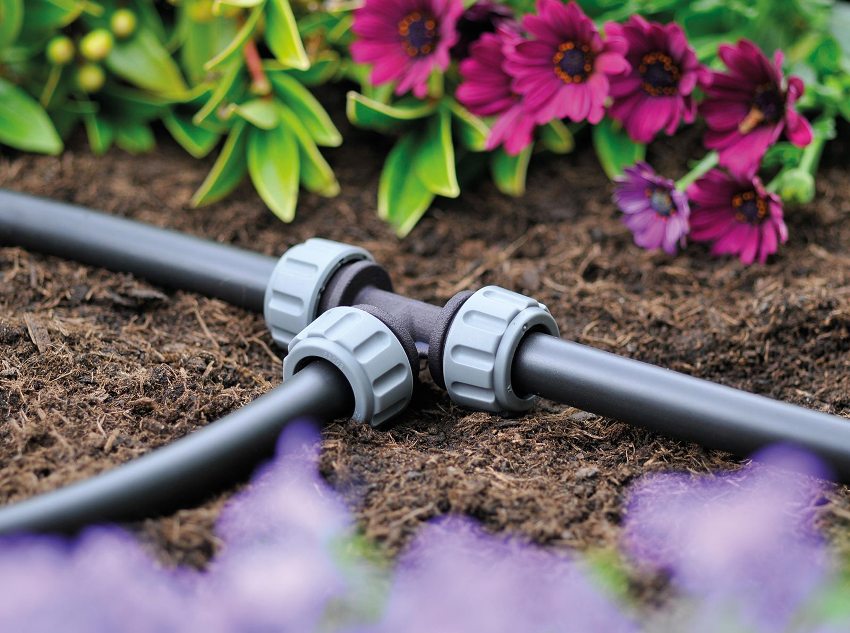
The main selection condition is the coincidence of sizes and diameters, compliance with the operating pressure of the line
The quick-detachable connection ensures quick and convenient installation of the water supply system for irrigation events. The versatility of the fitting also allows it to be used in other areas of activity - when arranging air and gas mains, connecting technological transport.
